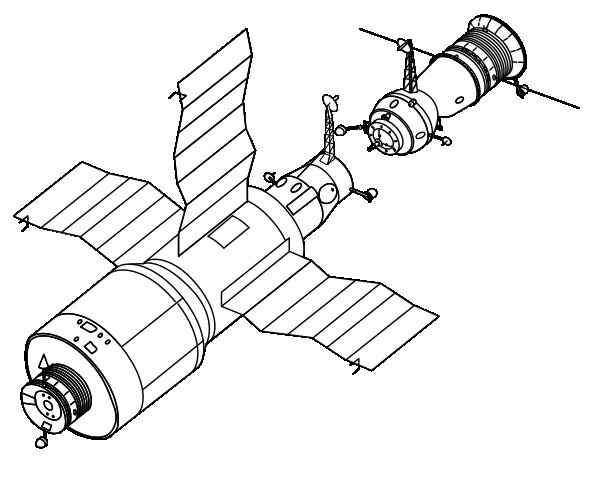
Salyut 4
Status - De-Orbited
Details
Salyut 4 represented the second phase of DOS civilian space station. Although the basic design of Salyut 1 was retained, it switched to three large solar panels mounted on the forward module rather than its predecessor's four small panels on the docking module and engine compartment, presumably to generate more power. It had an interior floor area of 34.8 sq. The pitch of the station was 2 X 59 N, yaw was 2 X 59 N and roll was 2 X 20 N. The electric System produced an average of 2.00 kW of power. It had 2,000 kg of scientific equipment alongside two sets of three solar panels each and was equipped with the Delta Navigation System which was a new autonomous navigation system that calculates orbital elements without assistance from ground. It was powered by KTDU-66 thrusters. Instrumentation
Agencies
Russian Federal Space Agency (ROSCOSMOS)
Government
Administrator: Yuri Borisov
RFSA 1992The Roscosmos State Corporation for Space Activities, commonly known as Roscosmos, is the governmental body responsible for the space science program of the Russian Federation and general aerospace research. Soyuz has many launch locations the Russian sites are Baikonur, Plesetsk and Vostochny however Ariane also purchases the vehicle and launches it from French Guiana.
Falcon 9
Starlink Group 6-82
Space Launch Complex 40 - Cape Canaveral SFS, FL, USAA batch of 29 satellites for the Starlink mega-constellation - SpaceX's project for space-based Internet communication system.
Falcon 9
Starlink Group 15-12
Space Launch Complex 4E - Vandenberg SFB, CA, USAA batch of 27 satellites for the Starlink mega-constellation - SpaceX's project for space-based Internet communication system.
Electron
Raise and Shine (RAISE-4)
Rocket Lab Launch Complex 1B - Rocket Lab Launch Complex 1, Mahia Peninsula, New ZealandRAISE-4 (RApid Innovative payload demonstration Satellite-4) is a Japan Aerospace Exploration Agency (JAXA) satellite for on-orbit demonstrations of …
Kuaizhou 11
DEAR-5
Launch Area 95A - Jiuquan Satellite Launch Center, People's Republic of ChinaDEAR-5 is a commercial in-orbit payload and micro-gravity experiments hosting spacecraft developed by Chinese commercial company AZSPACE for various …
Long March 12
SatNet LEO Group 16
Commercial LC-2 - Wenchang Space Launch Site, People's Republic of ChinaA batch of Low Earth Orbit communication satellites for the Chinese state owned SatNet constellation operated by the China Satellite Network Group. …

